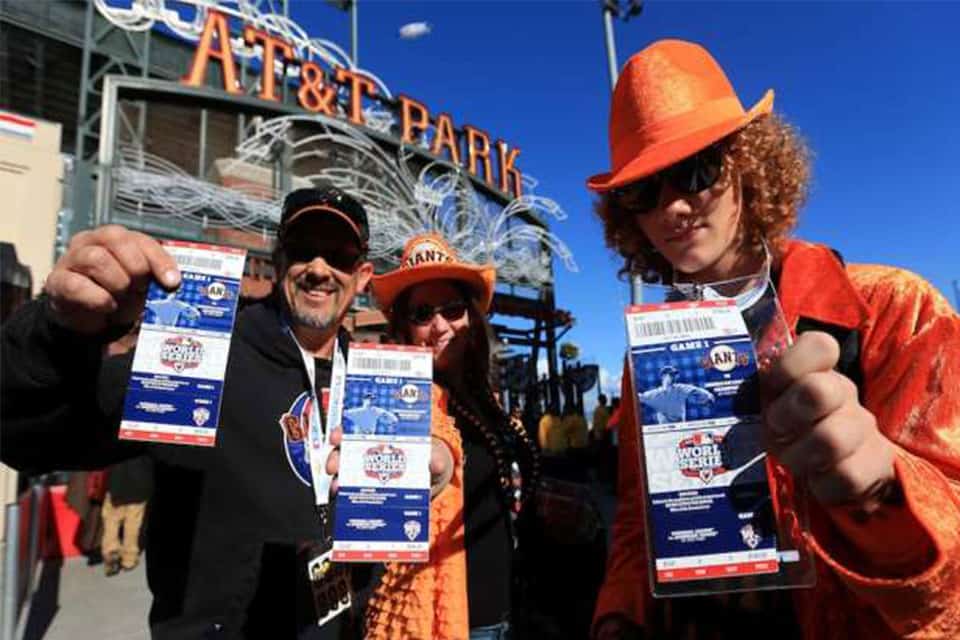Photo courtesy of Doug PensingerVia Getty Images. All rights reserved. Original article appeared in Financial Post Executive, online blog
In any sport, ticketing is an important revenue stream. It’s also a delicate balancing act between maximizing revenue and attendance, not losing money to competitors in the secondary market, and keeping fans happy.
It is a complicated trade off, but in recent years we have seen vast changes in how sporting events are priced. We’ve also seen the sporting world borrow pricing strategies from other industries, and vice versa. However, in such a diverse business environment what is the optimal pricing strategy for events, and what can other sectors learn from developments in ticket pricing?
Segmenting Customers
Generally speaking, some key aspects of successful pricing strategies is segmenting customers and managing their expectations. For sporting events, segmentation can be found in the price difference for seats. The better the view, the more you can expect to pay. Differential pricing has been the standard bearer of sports ticket pricing for a long time, but in a weaker world economy and competitive environment for gaining spectators, sports teams in North America and Europe have been trialing new strategies. These strategies vary from clever bundling approaches to complex algorithms estimating demand.
Bundling
There are many variations of bundles depending on the sport, including trying to entice fans based on what fans value. To give a few examples, the Toronto Blue Jays offer a family bundle where kids can meet the team’s mascot and run the bases prior to the game. Teams are also segmenting standard season tickets into ‘Sunday Game’ packages or ‘Arch Rival Game’ packages, where tickets for grudge games are sold together.
The next step: customized bundling. Unlike with predefined bundles of games, where fans may be uncertain which ones they can attend, fans get to pick the games they want to see. Other industries have their own variations of customized bundling. In the travel industry, Expedia is a good example. Travellers select if they want a flight and hotel, hotel and car rental, or all three, and Expedia puts together a tailored package.
Dynamic Pricing
In more recent developments, dynamic pricing is a growing ticket pricing strategy for sporting events. Amazon and other online retailers have used this strategy to quickly adapt to market conditions and consumer behaviour. In sports, the San Francisco Giants were early adopters in this sphere using what’s called Que software. This software is a multi-variable algorithm that allows tickets in each section to be changed up to 24 hours before the event. For baseball, depending on the demand factors such as pitching match ups, day of the week, team form and weather, the software highlights how many tickets are sold and recommends if sections are under or overpriced.
Dynamic pricing does have some limitations: it is best in industries with capacity constraints, those like ticketing, hotels and vacation packages and car rentals, and customers must accept that in some instances they’ll pay more. But for the Giants, it not only gave them greater flexibility, it increased ticket sales revenue by 7% after just the first year. Now many MLB teams are turning to dynamic pricing.
Hedonic Price Model
The Hedonic Price Model is a third development used to understand what fans value and help teams set optimal ticket pricing. The model is used in real estate for property valuation, but can effectively be used to analyze goods and services that have varying demand factors. Based on regression analysis of market data, the model measures the value of each attribute a customer considers in the purchasing decision. For the Miami Dolphins, the output of this analysis was a price-value ratio for each ticket category. This translated into a $5 increase on seats in the shade, increasing 55% of seats overall and lowering the price of 15% of seats, ultimately increasing both attendance and revenue.
This model can be applied across any number of industries. Any company with historical data can run regression analysis. The key is figuring out where the value is, but it’s something the Miami Dolphins did well.
Gamification
Finally, ratio buying or ‘gamification’ is another pricing innovation used for online purchases. As a strategy for enticing customers to buy, be it tickets or hotel rooms, the offer may be a 1-in-4 or 1-in-5 chance of winning a free ticket or a free night stay. Using systems like Wynbox, the ratio can be adjusted. As long as a certain number of tickets or rooms are bought at the regular sale price then profit goals will be met and heavy discounts, that undermine brand reputation, can be avoided.
New and dynamic pricing strategies are being used everyday to determine optimal prices. With these continuous innovations in pricing, it’s an exciting time not only for sport but all industries. So, the next time you go to a game or buy something online, give a second thought to the pricing strategy you bought into.
Paul Hunt is the president of Pricing Solutions, an international pricing strategy consultancy dedicated to helping clients achieve world class pricing competency. Paul occasionally publishes a pricing column in the FP Executive. He also writes for the Pricing Solutions Club. Article written in partnership with Emmet O’Neill, a research associate at Pricing Solutions. Article also available via The Financial Post.





